#gypsy a musical fable
Text
imelda stauntons rose’s turn is my roman empire im actually gonna puke the feeling of dread it gives holy shit im obsessed
1 note
·
View note
Note
hey, if you could make your own nancy drew game, what would it be about, what would be the plot, and what would be like the fun minigame?
What a lovely question! Thank you, for asking.
Hmm, let me see. So many things I’m interested in, have already been done within the games!
That being said, I think I’d have Nancy visit somewhere completely new! It would be cool for her to go to Russia and search out some fabled Romanov treasure. She could play off her mother’s espionage legacy. Not quite as emotionally heavy as SPY (obviously, Russia is a serious place and the Romanovs are a tragedy), but something more diplomatic. Assisting the United Staes with foreign affairs sort of thing, via The Network (formally ATAC). Of course, the Hardy Boys would be helping, as Network agents.
I’d make the plot revolve around exploring the Russian palaces the Romanovs inhabited. Trying to find the treasure so the USA stays on Russia’s good side or something to that effect. A peace mission, if you will; return the treasure to Russia and, in return, smooth the ruffled feathers, between the two nations. There is trouble lurking about, though…whispers of a KGB rebirth that might threaten Nancy’s mission…
The tensions of strained relations, a murdered royal family, the infamous Rasputin, dark, mysterious, nighttime Gypsy camp visits, and possible fascist regime uprising add to the spook/goosebump factor in this game.
You could go to multiple a palaces with different clues and puzzles…because I can’t get enough of castles and old buildings, in these games! Each location would give clues, until you find the hidden treasure. Featured puzzles would include: A Russian nesting doll puzzle, a Romanov family portrait slider puzzle, a mystical trinkets puzzle in Rasputin’s hidden lair, a playing a balalaika (a Russian instrument) puzzle, a Romani/Gypsy tarot card puzzle (GET OUT OF HERE, RICHARD TOPHAM), etc. I’d also have Nancy do some crazy side task with a beautiful, intimidating, female, ex-Olympic figure skater (please, stop thinking about Yanni, this is different okay?), where you have to do a series of intricate taps, using your keyboard arrows, to land ice skating moves and gain her respect.
As far as a mini game goes, Nancy would have to to cook and decorate blinis (Russian pancakes), as her undercover job. She’s a history major exchange student, working on an internship and trying to fund her schooling (thanks for the hookup, Network!). This gives her an alibi for snooping, in historical areas.
I’d have the game set in winter, because I like the coziness of a snowy game and…WELL. IT IS FLIPPING RUSSIA.
You know the soundtrack would go hard, with some traditional Russian-inspired music.
Anyways. Just some thoughts, off the top of my head. 🇷🇺🌨️🪆
Annnnnd since I’m so visual…some inspo:
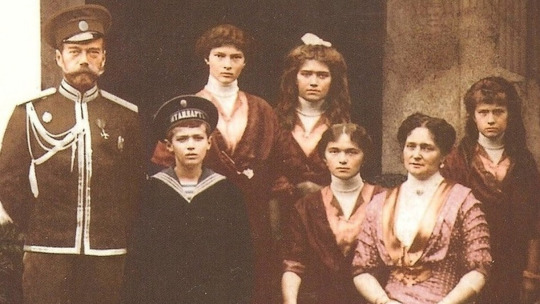




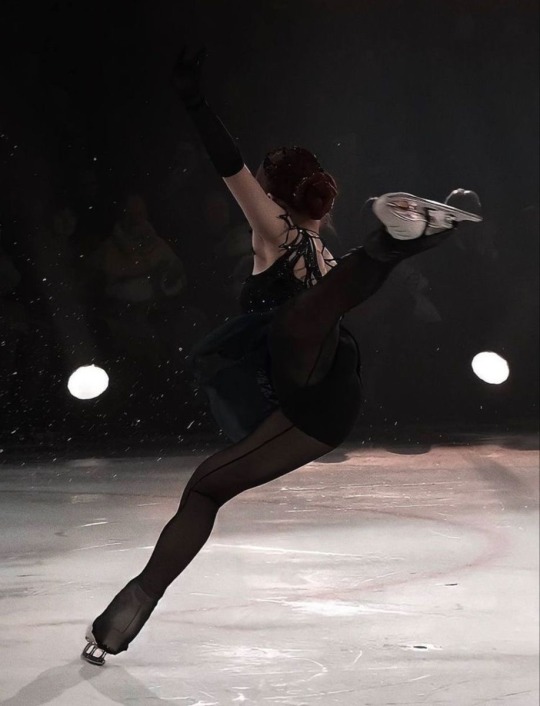
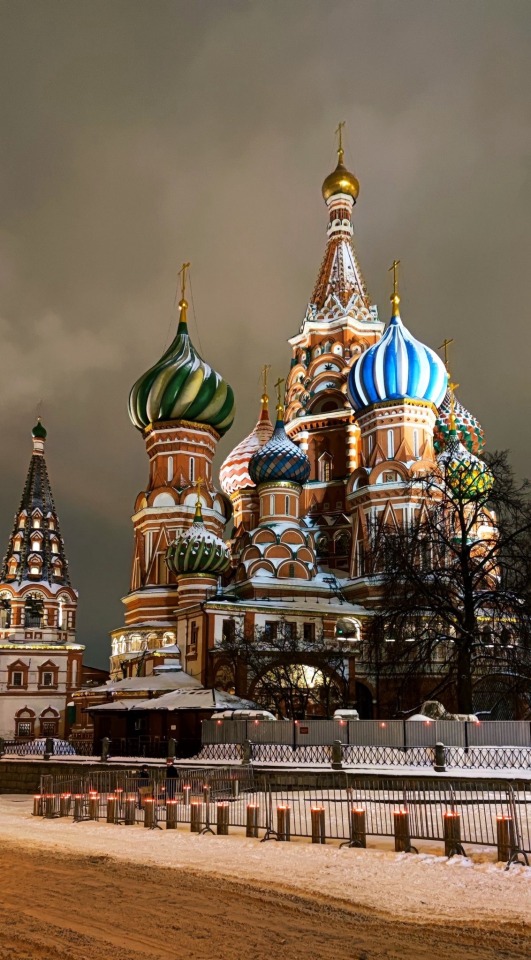

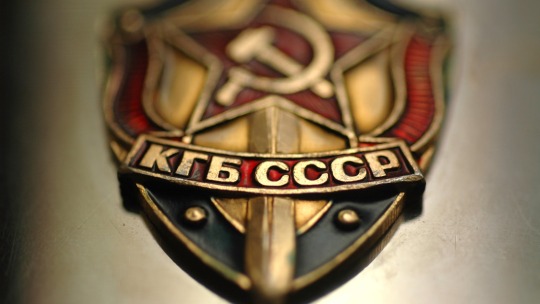

#why not have Nancy Drew stop an arms race? 😂#nancy drew#her interactive#clue crew#nancy drew pc games#the hardy boys#russia#Romanov#Rasputin
21 notes
·
View notes
Note
teds favourite musical is gypsy: a musical fable, and his dream role is herbie!!!
youve given me a new musical to listen to!
4 notes
·
View notes
Photo

Gypsy - A Musical Fable
The Columbia Treasury of the American Musical Theatre
Ethel Merman, Various Artists
Columbia Masterworks/USA (1973)
9 notes
·
View notes
Note
If it wasn't for the no real life people clause, I'd have submitted Mama Rose for sure. Alas, Rose Thompson Hovick was The Real Stage Mom.
Rose Thompson Hovick, mother of June Havoc and Gypsy Rose Lee, went down in theatrical history as "The Stage Mother from Hell" after her immortalization on Broadway in Gypsy: A Musical Fable.
oh good lord
2 notes
·
View notes
Photo

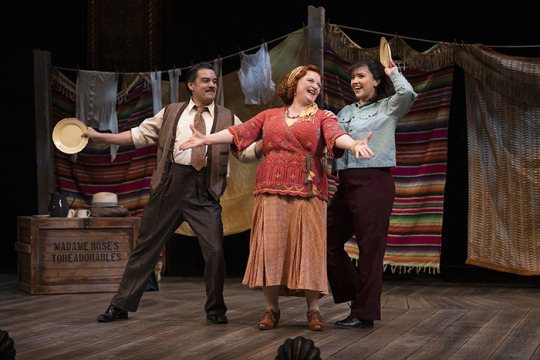

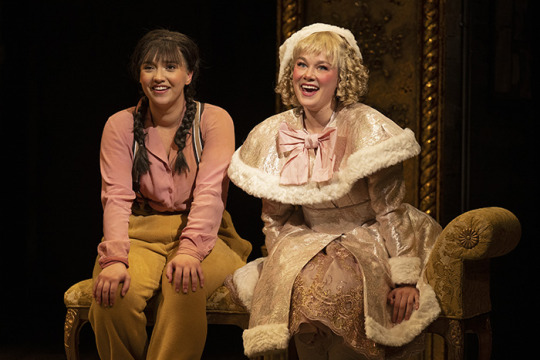

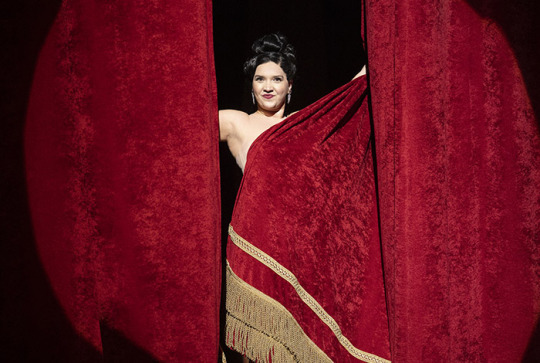
#ShawGypsy
#frontmezzjunkies reviews:
#ShawFestival's #GypsyMusical
b: #ArthurLaurents
m: #JuleStyne
l: #StephenSondheim
d: #JayTurvey
ch: #GennySermonia
w/ #KateHennig
#JasonCadieux
#JulieLumsden
@ShawFestival #Gypsy
A #Musical #Fable
#ShareYourShaw
Shaw Festival's "Gypsy" Majestically Lives Up to All Those Past Legends
https://frontmezzjunkies.com/2023/09/05/shaw-festival-gypsy/
(via Shaw Festival's "Gypsy" Majestically Lives Up to All Those Past Legends)
0 notes
Text

i'm going insane bcuz of this song
#also baby june and her newsboys gets in my head for hours at an end#recovered floppy disk#gypsy a musical fable#gypsy the musical#rose's turn
8 notes
·
View notes
Text
(Get Along)
it's the stairs. Burning all jewels, will you fight
all the burdens you've been left with, in so
doing, having fewer to leave behind?
With tethers and cares in borrowing due
(escaping the machine but still a cog?)
Owing implies owning implies possess-
ing implies strings and spin and all defined:
I'll meet y'all at the end of the rainbow.
Anything that's constant is only light;
gravity and time can change. She confess-
es as the quantum is observed. The tog-
gle: vanity is a relative hue.
Gathering flowers and a weight to press
them: what's contain'd and released from the bog.
Thermodynamics are: burn, meld, and spew.
(Inertia is not stasis, it's a bind.)
Momenta compounded are a hot tow,
this spinning earth can turn day into night.
(Try not to get worried) each day a new
understanding comes to be. Analog
is a harder copy, styling a tress
or rhyme. True effort is getting a kite
in the air. Reacting high and below
begets the entire glory of the mind.
There's no uploading to the cloud, unless
mutations are decisive like a frog.
Fucking gender is a will and a view;
without any vacuums, nothing is blind;
Hallelujah: the boners when I show
it to you. A hat held is still a right
A joy: a fly and a beaver aligned!
Who has one of those in two thousand so
on? Truly, it's not the stairs, it's the height.
Getting upset is it's own problem, to
cope is a mechanism for your nog-
gin to design and for your art to bless.
Avoided like Nestor: a classic cit-
ation, buff'd and shined, the presence to know
the gap we will you, perish like a dog.
1 note
·
View note
Photo
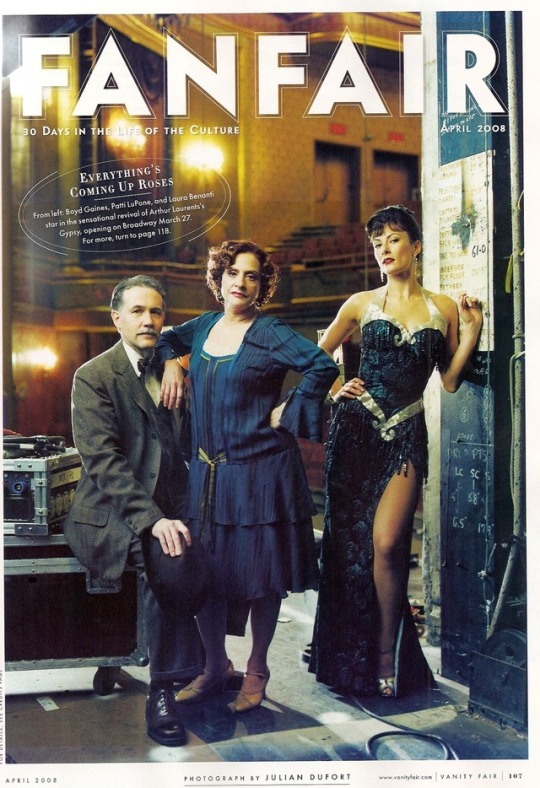
Boyd Gaines, Laura Benanti, and Patti LuPone posing for Vanity Fair while they were starring in Gypsy.
#I forgot this one when we were talking about our favorite Patti pics#this one has such a strong vibe you can feel it radiating off the picture#Patti LuPone#Laura Benanti#Boyd Gaines#Gypsy#gypsy a musical fable#gypsy the musical
118 notes
·
View notes
Audio
Above is the final Rose’s Turn. This is the soundboard recording from the closing night of Gypsy starring Ethel Merman.
83 notes
·
View notes
Text
Rose’s Turn: Costuming the 2008 “Gypsy” Revival
I’ve been on a bit of a Patti Lupone kick this year, as my reviews of War Paint probably showed, so I decided to take a look at a few of the costumes from her Tony-winning turn as Mama Rose in the 2008 revival of the musical Gypsy: A Musical Fable. I’m focusing on just the Mama Rose costumes this afternoon because I think that they deserve special attention, but in the future, I think I will go back and take a look at the other costumes.
Gypsy’s revival was costumed by the late Martin Pakledinaz, best known for his Tony Award-winning costumes in Thoroughly Modern Millie and the 2000-era revival of Kiss Me, Kate. Mr. Pakledinaz did a fantastic job capturing the original feel of the musical while still managing to infuse the dramatic, overbearing Rose character with rich, beautiful colors.
For those unfamiliar with the musical, Gypsy is the story of Rose Thompson Hovick, the mother to burlesque pioneer Gypsy Rose Lee (from whom the musical takes its title) and the very definition of a stage mother. You think the moms on Dance Moms or other reality shows are a little crazy? They’ve got nothing on Mama Rose. Take a read through Gypsy: A Memoir if you ever have the time or inclination. A dear friend of mine from college did her capstone on the influence of Gypsy Rose Lee on burlesque as an art form, and the story of her is absolutely fascinating, especially the domineering nature of her mother.
The role of Rose was originated on Broadway by a woman whose name is synonymous with theatre stardom, Ethel Merman, and has been since played on stage in New York by Dame Angela Lansbury (who won the 1975 Tony for her performance), Tyne Daly (who won the 1990 Tony for her performance), Bernadette Peters, Patti Lupone (whose revival is the subject of the review, and who won the 2008 Tony for her performance), and will be once again revived by Imelda Staunton in 2018 following a wildly successful West End revival. In other words, this is a role that commands an actress with power and the ability to belt out a melody that will be heard in the rafters. And any role that demanding deserves costumes that match. Let’s take a look:

The musical as a whole is set in the 1920s and 1930s, and follows a family of vaudevillians as they try and make it big, led by the domineering and overbearing Mama Rose. As a result, the costumes that Mr. Pakledinaz designed tend to be dramatic and showy, a little risqué, and intended to wow the audience without overpowering the character or actress (though, frankly, I’m not sure one can overpower Patti Lupone).
This first number is in a color palate I haven’t looked at much before, which is the golds and browns families. Typically, a designer will not mix two different patterns in fabric, but on occasion there can be a very good reason for doing so. Here, Mama Rose is wearing a brown-and-white checked jacket over a gold, orange, and white blouse and a slightly softer orange skirt. The overall effect that’s given off is one of the character being a bit off, like there’s something that isn’t quite right or expected about who and what they are. But that’s not a flaw in the costume design; it’s a feature in my book given that the musical follows Rose’s journey into losing everything--family included--in her quest for fame-by-proxy.
The color choices add to that overall effect, I think. Later in the musical, the palate Mr. Pakledinaz uses gets a bit darker and more muted, but here, it’s almost manic, clashing just a little bit without being unpleasing to the eye. The clash in the dual geometric patterns draws the eye, especially in comparison to the much plainer designs given to the supporting characters in this scene and in others. Clearly, this is where the attention should be, words or music be darned, and it’s a great effect. And, as I said, it’s not unpleasing to the eye. It’s just unusual.
I find that when I mention Gypsy to a person who isn’t a theatre fan, they don’t necessarily know what I’m talking about. But bring up the manic, show-stopping number “Everything’s Coming Up Roses,” the light of recognition tends to cross their faces. In part, that’s because this is one of those showtunes that managed to get into the public mind because it’s a great phrase, and because of Bette Midler’s performance as Mama Rose in a mid-1990s television version of the musical. For those who might not know it, let me give you a taste of this number and why the costume gets some special attention in this post, with this clip of Patti Lupone performing it at the 2008 Tony Awards ceremony; the dialogue is important, but if you want to skip right to the music, it starts at the 1:12 mark:
youtube
This number closes the first Act of the musical, as Rose’s younger daughter June has eloped and left her stage-obsessed mother behind. The family (including older daughter Louise, the titular Gypsy, and Mama’s fiancé Herbie) believe that this will finally compel Mama Rose to give up her obsession with making it big and let them settle down. Instead, in the blink of an eye, Mama Rose transfers her dreams from one daughter to another in a show-stopping number that is as manic as it is memorable.
For this number, Mr. Pakledinaz has costumed Patti Lupone in a number of layers that can be seen both in the clip above and in this still from the stage production itself; it’s far more somber than the piece which started out this review, and that reflects that despite the new plan to make Louise into Gypsy Rose Lee, the character of Mama Rose is still in a darker place herself and is now clinging to one last hope of stardom. In full, the costume looks like this:

The coat she wears at the train station in this scene is a rich, deep maroon purple that almost drinks up the shadows while providing a contrast to the Mr Lupone’s skin as it’s illuminated by the stage lights. The fabric is heavy and woolen in a rare exception to the general rule that you avoid heavy fabrics in live theatre (even when the setting requires it), and I think you can read a little metaphor into it: the character is literally being weighed down by keeping out the cold, the way she is figuratively weighed down by her dreams of stardom even if it’s only by proxy.
Beneath that is a gorgeous blue dress with a cream scarf/collar that, unfortunately, has not been photographed much in the right lighting. I was, however, able to find one still that offered a little more perspective on it, however:

As you can somewhat see, the dress underneath the maroon coat is blue, with a wild and Bohemian paisley and swirled pattern that is alive with color, busy, and designed to catch the eye. As with Mama herself, a simple exterior embodied by the coat gives way to a much more complex interior, as embodied by this dress. The blue manages to not fade into the background thanks to the coat acting as a barrier, and I like the addition of the scarf/collar itself as a way to lighten up the whole ensemble, as well as to draw the eye down to the skirt; in the theatre, I do believe it would be much easier to see the pattern, at least from center orchestra.
The scarf/collar combination itself is a gridded white chiffon, as seen in this closeup which also lets us look at the dress’ hem in a tiny bit more detail:

More of a cream than a pure white, it’s there to provide covering on the bust as well as to lighten the ensemble, as I stated. It does that job well, and the use of a rougher fabric design as compared to the smoothness of the dress itself is a wise one. It adds just a little bit more contrast when viewed up close, and I like that. We can also see the Bohemian influence in the hem of the dress, with the somewhat funky and rule-less design in blues and oranges.
The final costume that Ms Lupone is outfitted in during the 2008 revival is also her simplest of the production, but that in no way makes it less impressive. As the show winds down, the 11 o’clock number, “Rose’s Turn,” represents Mama Rose coming to grips with the idea that not only will she never make it big, but that she’s lost everyone she might have cared about: June (the daughter who eloped), Louise (Gypsy Rose), and Herbie (Rose’s fiancé). She tries hard in this number to justify everything she’s done, and finally admits that it was all about her in the end. It’s a sad, powerful, memorable number and it has a costume to match:
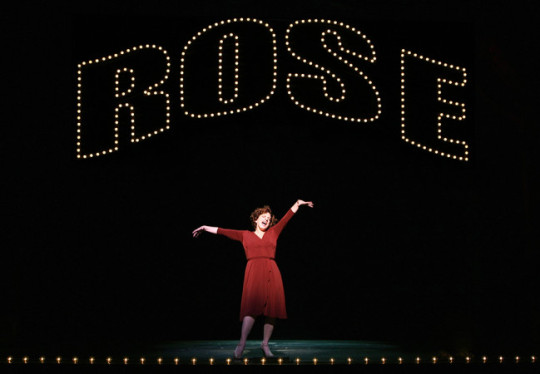
The giant ROSE in lights is in fact part of the production; part of the sequence for this number is Rose fantasizing about seeing her own name up in lights and hearing the crowds applauding and cheering her name. But as she fantasized, she’s outfitted pretty plainly. The deep, burnt red that she wears here is far different from the manic pattern of the blue dress from the end of Act I. Instead, it is simple, cleanly cut, and even makes the character seem a bit small on the darkness of the stage. That’s obviously intentional: the designer wants the focus to be on this character, and this character alone, with no design elements to distract. The color has to do the work, not the costume.

The A-line cut of the dress, interrupted only by a band of satiny or silky fabric at the waste, is classical and believable as simply a dress that a woman in Mama Rose’s station would own and wear. The plainness is once again a feature rather than a bug: there is nothing to distract from the character, from the words, from the music. There is simply the deep red color against the blackness of the character’s fantasy, and the audience is left--in my opinion--a little bit haunted by the overall effect.
Mama Rose is one of the most challenging roles on Broadway, not only because of the need for belting vocals and a powerful voice, but because of the personality of the character. There is a reason, I think, that only the Broadway Greats have been cast in the role throughout the musical’s history; Merman, Lansbury, Lupone, all are the definition of a leading lady, and have been costumed to fit the part. For the 2008 revival, I think the choice of colors and styles was absolutely spot on, and the Tony nomination for Mr. Pakledinaz was well-deserved.
Gypsy is a fantastic musical that drips with classic Broadway style and flair, not to mention costuming. I highly recommend it as an entrée into the world of musical theatre, and especially recommend the 2008 recording of the production. Treat your ears to the show-stopping, powerful, bittersweet melodies and enjoy it for what it is: beautiful theatre.
That wraps up this review of the 2008 revival of Gypsy. As I said, I may come back to look at some more of Mr. Pakledinaz’s designs for this production later on this year; there certainly is a lot to work with. On a personal note, this was the last production that I was able to enjoy before I took my hiatus from the theatre fandom, and it’s one that has always left fond memories in my mind. It’s worth looking into!
Later on this week, I’ll be posting some more full reviews and have a couple mini-reviews queued up. So stay tuned, dear readers!
Edit: A kindly Anon noticed that I had inadvertently reversed the birth order for Louise and June; June is, by a year, the younger of the two daughters, and this post has been updated accordingly!
54 notes
·
View notes
Text
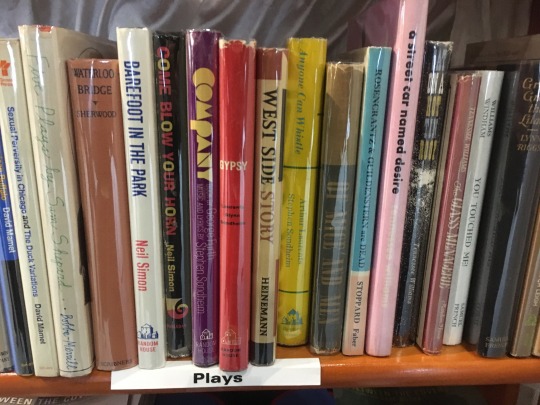
Signed first editions at the New York Antiquarian Book Fair
#book photography#mine#inkstainedleaves#gypsy: a musical fable#company musical#west side story#stephen sondheim#plays#anyone can whistle#a streetcar named desire#rosencrantz and guildenstern are dead
27 notes
·
View notes
Text
Looking for HQ Musical Videos
Looking for HQ bootlegs of these musicals, ideally with their original Broadway cast:
Dear Evan Hanson
Hamilton
Hadestown
To Kill a Mockingbird
Mean Girls
The Book of Mormon
Avenue Q
Les Miserables
The Phantom of the Opera
Wicked (any)
Heathers
Oklahoma (1943/ 2019)
Moulin Rouge
Into the Woods
Guys and Dolls
Gypsy
Sunday in the Park with George
Annie
Matilda
Any from this list would be so great!
#dear evan hanson#deh#hamilton#hadestown#to kill a mockingbird#mean girls#the book of mormon#avenue q#les mis#les miserables#the phantom of the opera#wicked#heathers#oklahoma#moulin rouge#into the woods#guys and dolls#gypsy#gypsy: a musical fable#sunday in the park with george#annie#matilda#broadway#musical#broadway musical#broadway musicals#musicals#obc#original broadway cast#broadway bootleg
11 notes
·
View notes
Text
Don’t I Get a Dream for Myself ? – Bernadette Peters and the 'Gypsy' Saga
Gypsy. It’s perhaps the most daunting of all of the projects related to Bernadette Peters to try to grapple with and discuss. It’s also perhaps the most significant.

For someone notoriously guarded of her privacy and personal life, careful with her words, and selective of the questions she answers, the narrative around this show provides some of the most meaningful insights it is possible to derive in relation to Bernadette herself. The show’s ability to do this is unique, through the way it eerily parallels her own life and spans a large range in time from both Bernadette Peters the Broadway Legend, right back to where it all began with Bernadette Lazzara, the young Italian girl put into showbusiness by her mother.
The most logical place to start is at the very beginning – it is a very good place to start, after all.
(Though no one tell Gypsy this, if the fierce two-way battle with The Sound of Music at the 1960 Tony Awards is anything to be remembered. Anyway, I digress…)
Gypsy: A Musical Fable with music by Jule Styne, lyrics by Stephen Sondheim, and book by Arthur Laurents, burst into the world and onto the New York stage in May of 1959. After closing on Broadway in March 1961, Ethel Merman as the world’s original Mama Rose herself led the first national tour off almost immediately around the country. Just a few months later, a second national touring company was formed, starring Mitzi Green and then Mary McCarty as Rose, to cover more cities than the original. It is here that Bernadette comes in.
A 13-year-old Bernadette Peters found herself part of this show in her “first professional” on-the-road production, travelling across the country with her older sister, “Donna (who was also in the show), and their mother (who wasn’t)”.
The tour played through cities like Philadelphia, Chicago, New Haven, Baltimore and Las Vegas before closing in Ohio in 1962. Somewhat uncannily, its September 1961 opening night in Detroit’s Schubert Theatre even returns matters full circle to the 2003 revival and New York’s own Schubert Theatre.
Indeed this bus-and-truck tour was somewhat of a turning point for Bernadette. She’d later remember, “I mostly thought of performing as a hobby until I went on the road with Gypsy”.
But while this production seminally marked a notable moment for the young actress as well as the point where her long and consequential involvement with Gypsy begins, it’s important to recognise she was very much not yet the star of the show and then only a small part of a larger whole.
Bernadette was with the troupe as a member of the ensemble. She took on different positions in the company through the period of nearly a year that the show ran for, including billing as ‘Thelma’ (one of the Hollywood Blondes), ‘Hawaiian Girl’, and additional understudy credits for Agnes and Dainty June.
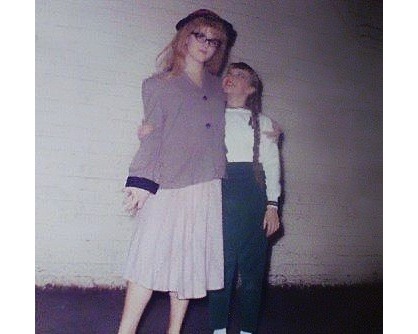
The above photo shows Bernadette (left) with another member of the ensemble (Sharon McCartin) backstage at the Chicago Opera House as one of the stops along the tour. Her comment on the stage of the Chicago theatre – “I’d never seen anything so big in my life!” – undeniably conveys how her experiences were new and appreciably daunting.
Along the tour, she assumed centre-stage once or twice as the understudy for Dainty June, but playing the young star was not her main role. Unlike what more dominant memory of the story seems to purport.
Main credits of June went instead to Susie Martin – a name and a tale of truth-bending that’s now well-known from Bernadette’s concert anecdotes. While performing her solo shows as an adult and singing from Gypsy, Bernadette has often been known to take a moment to penitently atone for historical indiscretions of identity theft or erasure where her mother long ago conveniently left out the “understudy” descriptive when putting down Dainty June on her resumé, in an effort to add weight to the teenager’s list of credits.
Whatever happened to Susie Martin? – many have wondered. Well, she soon left the theatre. But not before appearing in two more regional productions of Gypsy and a 1963 Off-Broadway revival of Best Foot Forward with Liza Minnelli and Christopher Walken.
Bernadette too went on to other regional productions of Gypsy. She spent the summer of 1962 in various summer stock stagings with The Kenley Players, like in Pennsylvania and Ohio, and this time she did indeed get to play June.

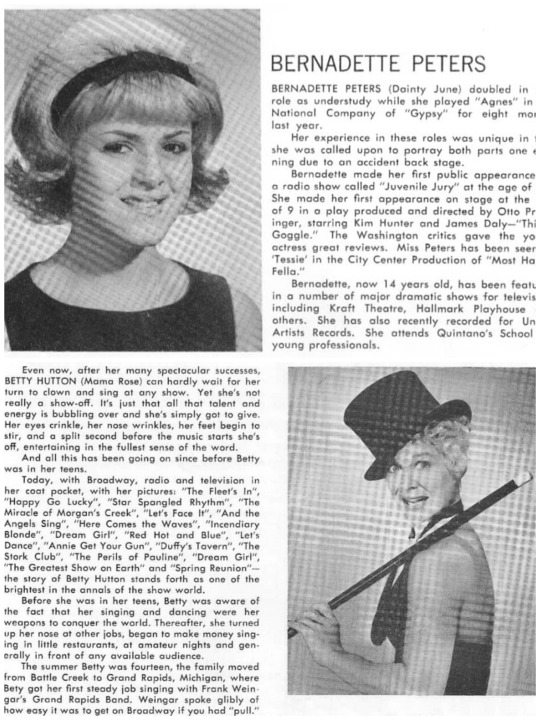
Above shows photos from different programmes for these productions. While some may have featured odd forms of photo editing, they at least also bring to attention Rose here being played by none other than Betty Hutton.
The two women couldn’t have been in more different positions when they coalesced in these rough-around-the-edges, small-scale productions. A young Bernadette was broaching summer stock in starting to take on bigger roles in the ascendency to her bright and long career. Meanwhile, Betty found herself there while navigating the descent that followed her sharp but fickle rise to Hollywood fame in the ‘40s and early ‘50s. Top billing Monday, Tuesday you really are touring in stock after all.
While details aren’t plentiful for these productions, it was recounted Betty apparently struggled in performing the role. And understandably so. Following the recent traumatic death of her mother in a house fire, and the birth of her third child shortly before the shows began, it’s not hard to see why her mind might have been elsewhere. Still, she was apparently impressed enough by the younger actress who turned in one of the show’s “creditable performances” to make comment that she would’ve liked Bernadette to play her if a movie were made about her life.
Bernadette might not have done this exactly, but she did go on to revitalise Betty’s best-known movie role, when stepping into Annie Oakley’s shoes in the 1999 Annie Get Your Gun revival. With Bernadette’s first Ethel Merman show under her belt, the ball was soon rolling on her second.
The 2003 production of Gypsy was imminently beckoning as her next successive Broadway musical and it was Arthur Laurents who lit the match to spark Bernadette’s involvement. Laurents, as the show’s original librettist, drove the revival by saying he “didn’t want to see the same Rose” he’d seen before. Going back to June Havoc’s description of her mother as “small” and a “mankiller”, and Arthur’s take that Bernadette sung the part “with more nuance for the lyrics and the character than the others”, the choice of Bernadette was justified. Moreover, “Laurents – whose idea it was to hire her – [said] going against type is exactly the point,” and Sam Mendes, as director, qualified “the tradition of battle axes in that role has been explored”.
So Bernadette also had her own baseline of innate physical similarity to the original Rose Hovick, in addition to her own first-hand memories of the women she’d acted alongside as Rose in her youth to bring into her characterisation of the infamous stage mother.
But there was a third factor beyond those as well to be considered in the personal material she had access to draw from for her characterisation. Namely, her own real life stage mother.
Marguerite Lazzara did share traits with the character of Rose. She too helped herself to silverware from restaurants, and put her daughters in showbusiness for the vicarious thrill. Marguerite had “always wanted to become an actress herself”, but had long been denied her desire by her own mother, who likened actresses to being as “close to a whore as you could be without, you know, getting on your back”.
In that case, to “escape a housewife’s dreary fate in Ozone Park”, Marguerite channelled her latent dream through her pair of young daughters instead, shepherding them out along the road. Thus was produced a trio of the two children ushered around the theatre circuit by the driven mother, forming an undeniable parallelism and a mirror image of both Bernadette’s reality and Gypsy’s core itself. Bernadette didn’t see some of these familial parallels at the time when she was a child, considering “maybe I didn’t want to see” – “didn’t want to see a mother doing that to her daughter”.
It was coming back to the show as an adult that helped Bernadette resolve who her mother was and some of the motivations that had propelled her when Bernadette was still a child. She realised, “I think she thought she was going to die very young”, as her own father died young. So “she was rushing around to get as much of her life as she could in there”.
When she herself returned to the production in playing Rose, Bernadette conceded to sometimes bringing elements of her mother and her driven energy into her portrayal, and admitted too she looked “like her a lot in the role”. You can assess any familial resemblances for yourself, from the images below that show a young Marguerite next to Bernadette in costume as Rose, and then with the pair backstage in 1961 in a dressing room on the tour.
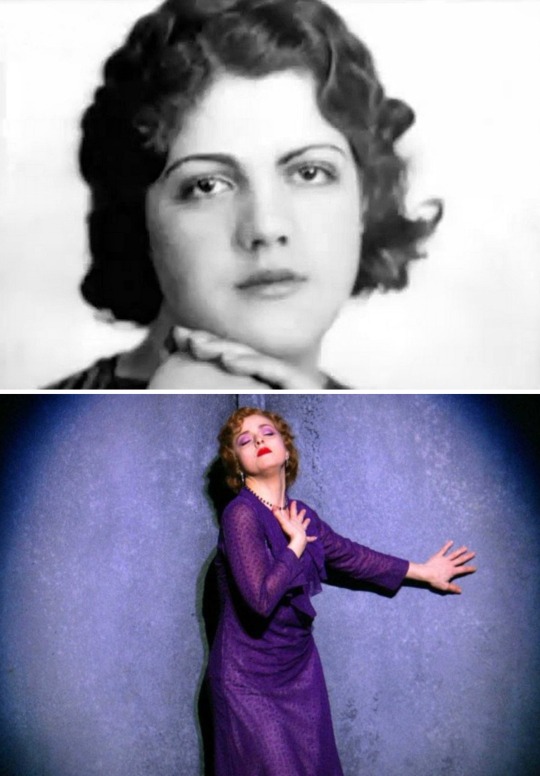

Marguerite was ambitious. From her own personal position and with the restrictions imposed upon her, it was ambition that materialised through her children. Irrevocably, she altered them. She placed Bernadette on TV as a very young child (“I was four when my mother put me in the business”); changed her daughter’s surname (“She told me my real name was too long for the marquees,” or really – “too Italian”); doctored her resumé (“Somehow the word ‘understudy’ vanished. ‘No one will know,’ said Marguerite”); and lightened her hair (“She’d say, ‘Oh, I’m just putting a little conditioner on it.’ But slowly my hair got blonder and blonder!”). All in the hope of giving her child a more favourable chance at the life she’d always wanted for herself.
On paper, a classic stage mother. “When I was a kid, she fulfilled herself through me,” Bernadette would say. “She put me into show business so she could get a taste of the life herself.”
But it’s important to consider Bernadette often qualifies that her mother wasn’t as brutal as Rose, nor was she herself as traumatised as June.
Bernadette didn’t begrudge her mother for her choices – at least by the time she was an adult, she’d rationalised them, explaining “naturally it was more exciting [for her] to go on the road with me than staying home and keeping house”.
As a child, Bernadette hadn’t necessarily wanted to be on stage, but there was a sense of ambivalence – not resentful belligerence – as she “didn’t care one way or the other” when she found herself there.
Like June, Bernadette may have been entered into and coaxed around a path she hadn’t voluntarily chosen. But unlike June, Bernadette had a deal with her mother that “she had only to say the word”, and she could leave.
Most crucially, she never did.
But that’s not to say Bernadette was enamoured with acting from the beginning.
She seemed to feel ‘outside’ of that world and those in it. And others saw it too.
It was in 1961 in Gypsy that Bernadette first met Marvin Laird – her long-time accompanist, conductor and arranger. The way he put it, he “noticed this one young girl, very close with her mother” who, during breaks, “didn’t mix much with the other girls”.
Beneath the effervescent stage persona, there’s a quieter and more reserved reality, and a sense of separation and solitary division.
When asked by Jesse Green in 2003 for the extensive profile in The New York Times if she thought her experiences on the road in Gypsy were good for her at that age, she gives a curious, somewhat abstract, predominantly dark, potentially macabre, response. He wrote:
She doesn’t answer at first but seems to scan an image bank just behind her eyes for something to lock onto. Eventually she comes out with a seeming non sequitur. “I didn’t know how to swim. I remember, in Las Vegas, I fell in, once, and they thought I was flailing, but I felt like: ‘It’s pretty down here!’ I might have been dying and I was thinking: ‘Look at the pretty color!’ And suddenly my fear of water was gone, and I could have stayed in forever.” After a while, I realize she’s answered my question. Then she dismisses the image: “But I had to get my hair dry for the show that day, so up I came.”
I’m still not entirely sure I know what she’s trying to convey here. My interpretation of this anecdote changes as I have re-visited and re-examined it on multiple occasions at different time points. It’s arguably multiply polysemic.
Was she simply swept up in a moment of childlike distraction, lost in the temporary respite alone away from the usual noise and clamour? Was she indicating comprehension that her feelings and perspectives came secondary to any practical necessities and inevitable responsibilities? Was she using the water to depict a muffling and fishbowl-like detachment from others her age who got to live more ‘ordinary’ lives in the ‘normal’ world above that she felt separate from? Was she referencing the pretty colours she saw as a metaphor for show business and how she became bewitched by them even despite potential dangers? Was she trying to legitimately drown herself, or at least exhibiting an ambivalence again as to whether she lived or died, because of what the highly pressurised demands on her felt like?
The underlying sentiment through her response in answer to Green’s primary question was that, in essence – no. Being a child actor was not “over all, a good experience for a youngster”.
Acting might have been something she fell in love with over time, but not all at once, not right from the beginning, and not without noting its perils.
It was a matter of accidental circumstance that landed Bernadette in the show business world to begin with at such a young age in the first place – “I just found myself here,” she would offer.
Her mother, who was “always crazy about the stage”, “insisted” that her sister, Donna take lessons in singing, dancing and acting.
A further point of interest to note is that, although it was Bernadette with her new surname who would grow up to be the famous actress, look to the cast lists from the 1961 touring production of Gypsy that featured both sisters in the company (see photo below) and you’ll find no ‘Lazzara’ in sight. Donna too, appearing under the novel moniker of “Donna Forbes”, had also already become stagified (nay, ethnically neutralised?) by her mother. As such it is clearly demonstrated that Marguerite’s intention at that point was to make stars of both her daughters. Correspondingly so, when her sister returned from her performance lessons some years before, “Donna would come home and teach me what she had learned,” Bernadette remembered. She may have gotten her “training second hand”, but the key element was that she got it.

For Bernadette, it was a short jump from emulating magpied tricks from her sister as well as routines from Golden Age Busby Berkeley musicals on the ‘Million Dollar Movie’ in front of the TV screen, to her mother getting her on the other side of the screen and actually performing on TV itself – belting out Sophie Tucker impressions aged five for all the nation to see.
The photos below show Bernadette in performative situations at a young age (look for criss-crossed laces in the second for identification).

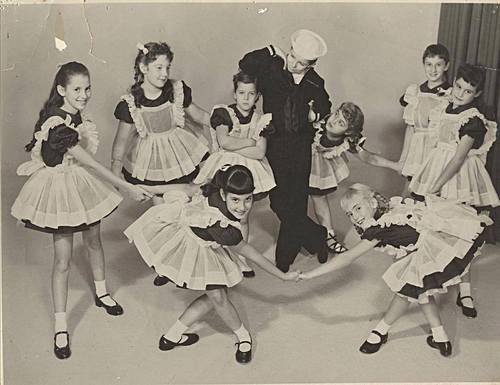
“At first, as a toddler, Bernadette enjoyed performing; it came naturally, a form of play that people inexplicably liked to watch.” It was “just a hobby” and she “wanted to do it”.
But while she may not have detested it, she didn’t entirely comprehend what was going on either. “I didn’t even know I was on TV,” she said. “I didn’t know that those big gadgets pointed at me were cameras and that they had anything to do with what people saw on the television set.”
When she started gaining more of an awareness of how “such play [was being] co-opted for commercial purposes”, she grew less enthralled. “She didn’t care for the bizarre children, accompanied by desperate mothers, she began to see at auditions: ‘They spent their whole time smiling for no reason, you know?’”
Being a child who had become sentient of being a child performer began to grow wearisome and grating to the young girl who had her equity card, a professional (and strange, new) stage name, and an increasingly long list of expectations by the time she was nine. There’s a keen sense she did not enjoy being in such a position: “I wouldn’t want to be a child again. When you’re a child, you have thoughts, but nobody listens to you. Nobody has any respect for you”.
Gypsy did indeed mark a turning point for Bernadette as mentioned above – but not just in the way that seems obvious. Looking back at it now, it does appear the monumental turning point at which she started appearing in significant and reputable productions, beginning what would be the foundation to her ‘professional’ career. However it was also the turning point after which she nearly quit the business altogether.
When she returned from performing in Gypsy, Bernadette felt like she’d had enough. One way of putting it was that she “then retired from the business to attend high school”, wanting to have some semblance of a normal scholastic experience “without the interruptions”. But whatever dissatisfaction she was feeling as an early adolescent on stage, she didn’t resolve at school – going as far as saying that while at Quintano’s School for Young Professionals, “she was in pain”.
“When you’re a teenager you’re too aware of yourself,” she recalled. Being a teen and trying to come to terms with of the expectation of the ‘60s that “you are supposed to look like Twiggy, and you don’t, you feel everything is wrong about you”. Everything “was all about tall, skinny, no chest…[and] hair straight”. Little Bernadette with her “mass of [curly] hair and distracting bosom”, as Alex Witchel put it, was never going to fit that mould. “That was not me,” she stated. “At all.”
Her self-consciousness grew to the point that it became overwhelming and asphyxiating. “I was trying desperately to blend in and be normal, but that doesn’t allow creativity to come out,” Bernadette said. “I knew I was acting terrible. The words were sticking in my mouth and all I could think about was how I looked”. It was hard enough just to look at herself (“I didn’t like what I saw in the mirror”), let alone to have other people gawk at her on stage. So she stopped trying. She “didn’t work much from age 13 to 17” in the slightest. Bernadette would later reflect in 1981 in an atypically open and vulnerable interview, “I was very insecure. Insecurity is poison. It’s like wearing chains”.
It was a combination of factors that helped her overcome these feelings of such toxic and weighty burden to draw her back into the public world of performing and the stage. “The two people who helped her most, she says, were David LeGrant, her first acting teacher, and her vocal coach, Jim Gregory.” Jim helped with “[opening] a whole creative world for [her] with singing”; and it was David who’d give her the now infamous and often (mis)quoted line about individuality and being yourself.
Having these kinds of lessons, she reasoned, was “really a wonderful emotional outlet for a kid of 17”. The process of it all was beneficial for her therapeutically – “you have a lot of emotions at that time in your life, and it was great to go to an acting class and use them up”. And Bernadette felt freer on stage than she did out on her own in the ‘real world’, saying “[up there] I don’t have to worry about what I’m doing or saying because I’m doing and saying what I’m supposed to be doing and saying”.
Finally then and with considerable bolstering and support, she grew comfortable with the notion of being visible on stage and in public, and realised she was never going to blend in as part of the chorus so it was simply better to let go of such a futile pursuit.
David LeGrant’s guiding advice to Bernadette (“You’ve got to be original, because if you’re like everyone else, what do they need you for?”) wasn’t just a trite aphorism. For her, it was a life raft. It was the key mental framing device that allowed her to comprehend for the first time that she might actually have intrinsic value as herself. And that it was imperative she let herself use it.
She had always stuck out, yes, but she had to learn how to want to be seen – talking of it as a conscious “choice” she had to make when realising she did “have something to offer”.
Thus soon after Bernadette graduated, she stepped back into productions like in summer stock and then Off-Broadway as she made her debut at that next theatrical level at 18. It wasn’t long before she was discovered in what’s seen as her big break in the unexpected smash hit, Dames at Sea. And so Bernadette Peters, the actress, was back. And she was back with impact and force.
Besides, as she’s also said, she couldn’t do anything else – “if I ever had to do something else to earn a living, I’d be at a total loss”. An aptitude test as a teenager told her so apparently, when she “got minus zero in everything except Theater Arts”. So that was that. Her answer for what she would’ve done if she’d never found acting is both paradoxically exultant and macabre – “I don’t know, probably shot myself!”
Flippant? Maybe. Trivial? No.
Acting is thus undoubtedly related highly to Bernadette’s sense of purpose and self-worth. This is what makes it even more apparent that a show with such personal and historical connections for her, as in Gypsy, was going to be so consequential and impactful to be a part of again as an adult and perform on a public stage.
She’s called inhabiting the role of Rose in the 2003 revival many things: “deeply personal”, “life changing”, “like going through therapy” – to name a few.
In interviews regarding Gypsy and playing the main character, when asked what she had learnt, Bernadette would frequently say something like, “It taught me a lot”. Pressed further about specifics, her answers often hem close to vague platitudes as she maintains her normal tendency of endeavouring to keep her privacy close to her chest.
On one occasion, she actually elaborated somewhat on what she’d learnt, giving a fuller answer than the question is normally afforded anyhow. Beyond all it revealed to her about her mother, she extended to admitting “my capacity for love and my capacity for anger” as aspects in her that the show had permanently altered. Moreover, Rose to her was undoubtedly the “most rewarding and fulfilling acting experience” she had ever had.
But while such deep, personal and emotional depths and memories were being stirred up beneath the surface in private, she was getting vilified in public singularly and repeatedly by New York Post columnist, Michael Riedel.
Even before she’d set foot on stage, Riedel set forth in motion early in the 2003 season a campaign of vocal and opinionated defamation against Bernadette as Rose that she was miscast, insufficiently talented, and would be incapable of executing the role.
Too small, too delicate, too weak, too many curves (and too much knowledge of how to use them). Not bold enough, not loud enough – not Merman enough. Chatter and speculative dissent begun to grow in and around the Broadway theatres.
For such a prestigious and historic musical theatre role, it was always going to be hard to erase the large shadow of an original Merman mould. Ethel was woven into the very fabric of the show, with the rights to Gypsy Rose Lee’s memoirs being obtained at her behest in the first place, and the idiosyncrasies of her voice having been written into the songs themselves by their very authors.
To step out from such a domineering legacy would be a marked challenge at the best of times. Let alone when battling a respiratory infection.
Matters of public perception were certainly not helped when Bernadette then got ill as the show started its preview period and she started missing early performances.
Nor did it help with critical perception that the Tony voting period coincided so synchronously with Gypsy’s first opening months – giving Bernadette no time to recover, find her feet, and settle more healthily into the show for the rest of the run before the all important decisions were made by that omnipotent committee.
The tale of her illness is actually undercut by a more innocent and unsuspecting origin than you’d expect from all the drama and trouble it engendered. Bernadette decided nearing the show’s opening to treat herself to a manicure. In the salon, she was next to a woman very close to her with a frightful sounding cough. Who could’ve known then that this anonymous and inconspicuous lady through a fateful cause-and-event chain would go on to play such a part in what is among the biggest and most enduring Tony Awards “She was robbed!” discourses? Or even more broadly – in also arguably playing a hand in the closure and financial failure of an $8.5 million Broadway show after its disappointing performance at the Tony Awards that ominously “[spelled] trouble at the box office” and led to its premature demise?
Bernadette did not win the Best Actress in a Musical Tony that night on June 6th 2004. The award went instead (not un-controversially) to newcomer Marissa Jaret Winokur for Hairspray.
She did however give one of the most indelibly resonant and frequently re-referenced solo performances at the awards show just before she lost – defying detractors to comprehend how she could be unworthy of the accolade with a rendition of ‘Rose’s Turn’ that has apocryphally earned one of the longest standing ovations seen after such a performance even to date.
Even further and even more apocryphally, she reportedly did so while still under the weather as legend as circulated by musical theatre fans goes – performing “against doctor’s orders” with stories that have her being “afflicted with anything from a 103-degree fever, to pneumonia, to a collapsed lung”.
Seeing then as unfortunately there is no Tony Award speech to draw on here, matter shall be retrieved fittingly from that which she gave just a few years earlier in 1999 for her first win and previous Ethel Merman role in Annie Get Your Gun to wrap all of this together.
As has been illustrated, there are many arguably scary or alarming aspects in Bernadette’s Gypsy narrative. There’s undeniably much darkness and an ardent clamouring for meaning and self-realisation along the road that tracks her journey parallel to the show. But unlike Rose’s hopeless decries of “Why did I do it?” and “What did it get me?”, there was a point for Bernadette.
As her emotional tribute in 1999 went: “I want to thank my mother, who 48 years ago put me in showbusiness. And I want to finally, officially, say to her – thank you. For giving me this wonderful experience and this journey.”
Whatever all of this was, maybe it was worth it after all.
#bernadette peters#gypsy#gypsymusical#gypsy the musical#stephen sondheim#arthur laurents#jule styne#ethel merman#broadway#musical theatre#musicals#broadway history#annie get your gun#betty hutton#tony awards#gypsy rose lee#sam mendes#new york#musical#musical theater#broadway musicals#the sound of music#summer stock#liza minnelli#stage mother#child actress
72 notes
·
View notes
Text
Season 1 Songs in Chronological order of release
A couple of things
Duplicates were eliminated
Broadway songs were done by when the show premiered
A few of the songs are the release dates of the versions popularized by other artists - such as Over the Rainbow - to reflect the artists they chose to emulate
Mash ups were broken up, and songs are treated individually here
If you guys enjoy this - I’ll make ones for the rest of the show, including an comprehensive list. ;)
1936 -"Sing, Sing, Sing (With a Swing)" - Louis Prima
1936 - "Smile" -Nat King Cole
1937 - "The Lady Is a Tramp" - Sammy Davis, Jr.
1950 - "Sit Down, You're Rockin' the Boat" - Guys and Dolls
1956 - "I Could Have Danced All Night" - My Fair Lady
1957 - "Tonight"- West Side Story
1959 - "Rose's Turn" - Gypsy: A Musical Fable
1960 - "Where Is Love? -"Oliver!
1963 - "It's a Man's Man's Man's World"- James Brown
1964 - "Don't Rain on My Parade" - Funny Girl
1964 - "A House Is Not a Home" - Dionne Warwick
1964 - "Funny Girl" - Barbra Streisand
1966 - I Say a Little Prayer" - Dionne Warwick
1966 - Maybe This Time” - Cabaret
1966 - "Cabaret" - Cabaret
1966 - "You Keep Me Hangin' On" - The Supremes
1967 - "Respect" - Aretha Franklin
1967 - "Hello, Goodbye" - The Beatles
1967 - "To Sir, with Love" - Lulu
1968 - Young Girl - Gary Puckett & The Union Gap
1968 - "Hello, I Love You" - The Doors
1968 - "Dream a Little Dream of Me" - The Mamas and the Papas
1969 - "Leaving on a Jet Plane" - John Denver
1969 - "Sweet Caroline" - Neil Diamond
1969 - "Proud Mary" - Ike and Tina Turner
1969 - "You Can't Always Get What You Want" - The Rolling Stones
1970 - "One Less Bell to Answer - The 5th Dimension
1971 - "You're the One That I Want" - Grease
1971 - "Imagine" - John Lennon
1972 - "Lean on Me" - Bill Withers
1973 - "Piano Man" - Billy Joel
1973 - “Dream On" - Aerosmith
1974 - "(You're) Having My Baby" - Paul Anka and Odia Coates
1974 - "Tell Me Something Good" - Rufus and Chaka Khan
1975 - "Mister Cellophane" - Chicago
1975 - "All by Myself" - Eric Carmen
1975 - "Home" - The Wiz
1975 - "Run Joey Run" - David Geddes
1975 - "Give Up the Funk - "Parliament
1975 - "Bohemian Rhapsody" - Queen
1976 - "Somebody to Love" - Queen
1976 - "Shout It Out Loud" - Kiss
1976 - "Beth" - Kiss
1978 - "Le Freak" - Chic
1978 - "Fire" - The Pointer Sisters
1979 - "Highway to Hell" - AC/DC
1979 - "Lovin', Touchin', Squeezin'" - Journey
1980 - "Another One Bites the Dust" - Queen
1980 - Any Way You Want It - Journey
1981 - "Don't Stop Believin'" - Journey
1981 - "Endless Love" - Lionel Richie and Diana Ross
1981 - "And I Am Telling You I'm Not Going" - Dreamgirls
1981 - "Hello Again" - Neil Diamond
1981 - "Physical" - Olivia Newton-John
1981 - "Jessie's Girl" - Rick Springfield
1982 - "Dancing with Myself" - Generation X
1982 - "The Safety Dance" - Men Without Hats
1983 - "Alone" - Heart
1983 - "Jump" - Van Halen
1983 - "Total Eclipse of the Heart" - Bonnie Tyler
1983 - "Pink Houses" - John Mellencamp
1983 - "Faithfully" - Journey
1984 - "Can't Fight This Feeling" - REO Speedwagon
1984 - "Hello" - Lionel Richie
1984 - “Borderline" - Madonna
1984 - "Like a Virgin" - Madonna
1985 - "On My Own" - Les Misérables
1985 - Walking on Sunshine - Katrina and the Waves
1985 - "I Dreamed a Dream" - Les Misérables
1986 - Don't Stand so Close to Me - The Police
1986 - "Papa Don't Preach" - Madonna
1986 - "Hair" - Hair
1986 - "True Colors" - Cyndi Lauper
1986 - Open Your Heart - Madonna
1987 - "Push It" - Salt-n-Pepa
1989 - "Bust a Move" - Young MC
1989 - "Express Yourself" - Madonna
1989 - "Like a Prayer" - Madonna
1990 - "Poison" - Bell Biv DeVoe
1990 - "Vogue" - Madonna
1990 - "Ice Ice Baby" - Vanilla Ice
1990 - "U Can't Touch This" - MC Hammer
1990 - "Over the Rainbow" - Israel Kamakawiwoʻole
1991 - "I Wanna Sex You Up" - Color Me Badd
1991 - "Good Vibrations" - Marky Mark and the Funky Bunch
1992 - "One" - U2
1993 - "Loser" - Beck
1994 - "I'll Stand by You" - The Pretenders
1995 - "This Is How We Do It" - Montell Jordan
1998 - "The Boy Is Mine" - Brandy and Monica
2000 - It's My Life - Bon Jovi
2000 - "Thong Song" - Sisqó
2001 - "Ride wit Me" - Nelly feat. City Spud
2001 - "Bootylicious" - Destiny's Child
2001 - "What It Feels Like for a Girl" - Madonna
2002 - "Beautiful" - Christina Aguilera
2003 - "Defying Gravity" - Wicked
2003 - Crazy in Love - Beyonce
2004 - Confessions Part II - Usher
2005 - "Gold Digger" - Kanye West feat. Jamie Foxx
2006 - "Rehab" - Amy Winehouse
2006 - "Keep Holding On" - Avril Lavigne
2006 - "Smile" - Lily Allen
2007 - "Taking Chances" - Céline Dion
2007 - "Hate on Me" - Jill Scott
2008 - "I Kissed a Girl" - Katy Perry
2008 - "Take a Bow" - Rihanna
2008 - "Mercy" - Duffy
2008 - "Bust Your Windows" - Jazmine Sullivan
2008 - "Single Ladies (Put a Ring on It)" - Beyoncé
2008 - "Last Name"Carrie - Underwood
2008 - Halo - Beyonce
2008 - "No Air" - Jordin Sparks and Chris Brown
2008 - "Gives You Hell" - The All-American Rejects
2008 - "4 Minutes" - Madonna feat.Justin Timberlake
2008 - "Poker Face" - Lady Gaga
2009 - "My Life Would Suck Without You" - Kelly Clarkson
2009 - "Bad Romance" - Lady Gaga
#glee#glee musical retrospective#glee songs#look at that big ole gap in the 90s#also remember the show was released in 2009 - hence all the 2008 releases
28 notes
·
View notes
Text
Summertime
A hill nigh the park laden with dandelions,
Mother’s saccharine song;
Ice cream cart and toy trucks,
Long time sondering at the fairs, the jolly carousel.
I miss the summertime swallows,
Although I don’t see them anymore;
They evoke memories of songs and folklore in my sleepless dreams.
I miss the outdoors, a fool’s paradise,
Observing people and their silence,
With another soul but only me.
My friends’ summer dresses, their leering faces,
Cycling miles. The hummingbirds and bees,
The fragrance of fresh spearmint.
Dainty dames and merry maidens winding
Carnations in the air.
Tiaras of gerbera daisies and yarrows,
Sword fighting with twigs,
Capes of scarves and bare feet in the brook.
Climbing trees, scouts and the sounds of the city humming.
I miss the painted pictures of children laughing,
Sitting in garden wagons;
The setting sun and mellow moss roses
Hanging from the old bookshop’s tainted roof.
Running for hours and listening to the bird’s fable,
The bellowing crowd and the lake’s call.
The little white catmints in bouquets bought for a lover
And the chirp of the old man’s evening family diner.
Lamplit streets in shadows at night,
The waning gibbous and a breeze.
Dusk spent on the windowsill, blathering
Incoherence into a friend’s listening ear.
The grocery stores and their dim lights,
A cup full of fairy tales,
A brew for the sacred and the dead.
The empty inkpot, smeared lyrics to an incomplete
Song and the music of the joyous gypsies and the elated hipsters.
A night spent counting stars,
The rumble of beating hearts;
How do I miss the summertime I never had?
~Cole E. Whittaker
Tags under the cut
@tamaraheartz @lucian-evander @lostinmymindpalace-m @acciorxses @ghost-spidey @johermione @thepoorlywritten @the-poet-who-bleed-her-agony @the-girl-who-cried-wolf @the-daughter-of-athena @just-a-donut-who-reads @dreamybellatrixanvm @shit-thats-true @deadly-poetic @the-ghost-on-your-attic @samalaingik @lostintheskysworld @star-dust-2317 @ughgclden @sentimental-bits @hiya-its-amber @towriteabetterlife @pulchritudinous-bibliophile @nyctophilia-love-for-darkness @woonil-razlib @seravph
#me#poetry#poems#poets#poets & writers#poets&writers#poets and writers#poems on tumblr#poets on tumblr#poetry by me#original poetry#poetry by women#queer poets on tumblr#spilled ink#spilled in words#spilled poetry#spilled thought#poets community#spilled poems#poetry blog#cole e. whittaker#hyacinths-on-my-grave#virginia-sappho-emily-and-me#summertime#cole's blog renovation
8 notes
·
View notes